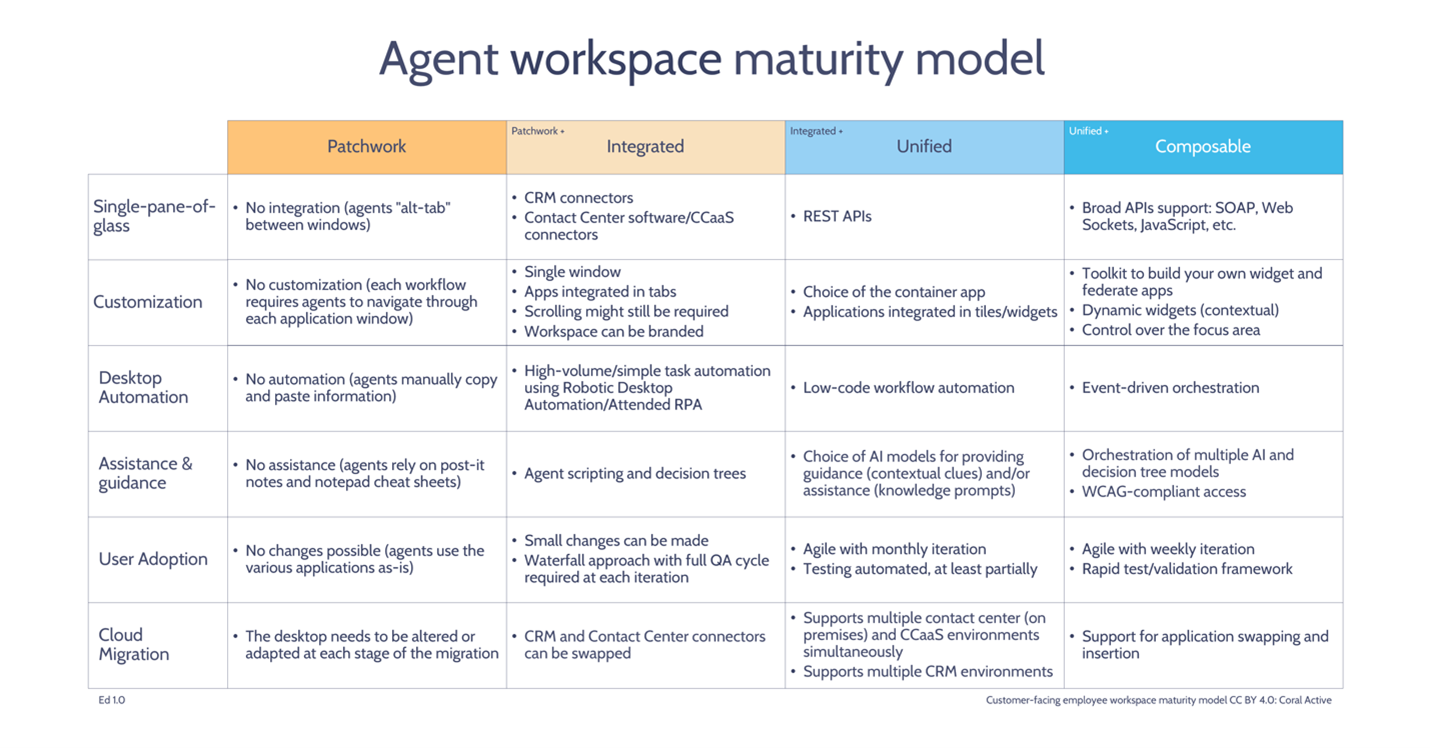In the first part of this series, we explored the critical capabilities of a modern contact center desktop and summarized the five main technology options — CCaaS built-in workspaces, specialized desktops, CRM applications, event-driven frameworks, and web development frameworks. In this second part, I will outline how to evaluate each option so you can decide which will work best for its intended customer.
First step: Determine how complex your contact center needs are. If they’re comparatively simple, then the built-in options of your CCaaS and CRM software should be the first to consider when assembling a unified workspace. These native tools are typically the easiest to set up, integrate, and support - making them the safest choice up to a point.
However, as your needs grow more sophisticated and custom, you should examine where the built-in options fall short. Any identified functional gaps should prompt you to expand your evaluation to include other solution types.
If this is where you find yourself in the evaluation process, your next step is to gather functional requirements from your stakeholders using the following 5 steps that mirror our capability framework:
- Catalog all applications, current and future, that require integration into the desktop. Make the list as comprehensive as possible, particularly beyond just the CRM and contact center systems. One checkpoint is listing all systems of record and selecting those that should contribute to a 360-degree customer view.
- Review your existing customization backlog and solicit stakeholder input on additional needs. Conduct open and candid discussions to surface any desired customizations you have been unable to accommodate previously.
- Consider both near-term and longer-term (three to five years) plans for AI and automation capabilities. Avoid a short-sighted approach - typically multiple AI models and decision trees are required to address different customer jobs-to-be-done across various interaction types.
- Set the target release cadence and testing approaches to support frequent, modular updates. Be bold and target release cycles that match the pace of innovation in the digital world.
- Map out your cloud transition strategy. Laying out each of the steps will tell you the mix of cloud and on-premises configurations to support. This defines what both your agent workspace will have to support and the infrastructure changes your desktop should make transparent to customer service representatives
Armed with these requirements, you can evaluate your CRM and contact center built-in desktop capabilities against your critical needs. If there are no major gaps found, simply compare the two solutions head-to-head to finalize your choice between them.
Any identified gaps should indicate which other solution categories - specialized desktops, event-driven frameworks, or web development frameworks - should be added to your list for consideration.
Leverage the following maturity model to map your current and desired end-state:
Another key consideration is assessing available resources - both expertise and personnel - for handling custom work, whether in-house or via a partner.
There are three common mistakes made at this stage:
- Only evaluating a minimum viable product (MVP) workspace, rather than the desired end-state.
- Under-evaluating expertise needed for sensitive elements, including user experience design, communications system integrations, underlying frameworks around data exchange, security and high availability.
- Disregarding necessary DevOps tools for development and testing to increase feature velocity, and support your release cadence goals.
The degree of flexibility increases from specialized desktops up through event-driven frameworks and on to web development frameworks, as does the development work entailed. Conducting rough sizing estimates for each option will inform the best solution type and vendor selection through comparing key dimensions:
- Development costs for a minimum viable product (MVP) and the Production-grade version
- Timeline to assemble the MVP
- Effort and expertise required to design and build security, scalability, and high availability frameworks (if not provided)
- Third party costs, such as licensing or subscriptions
- Ongoing maintenance and DevOps costs
- Level of expertise required
- Extent of control over the workspace
- Associated risks
The reward at the end of this process was well captured by Gartner: "By 2026, customer service functions that implement a Connected Rep strategy will improve contact center efficiency by 30%."










